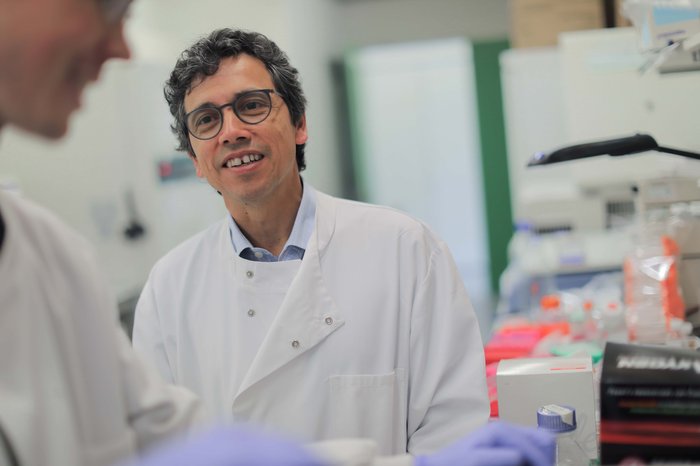Understanding how childhood B-ALL develops
Although childhood B-ALL can be cured, current treatments can have severe side effects which can be very disruptive during a child's early life. Professor Enver wants to find out more about how this childhood blood cancer develop so he can prevent it from happening or find better ways to treat it.

Professor Tariq Enver
The challenge
Childhood B-cell acute lymphoblastic leukaemia (B-ALL) occurs when too many white blood cells called B-cells are produced in the bone marrow. These B-cells have a different shape and structure compared to healthy B-cells and don’t work properly to fight infections. The unhealthy B-cells build up in the blood, crowding out the healthy B-cells, causing a shortage of normal healthy blood cells. Although this disease can be cured, current treatments can have severe side effects and are very disruptive to children’s lives. It is important to find better, kinder ways to treat childhood B-ALL.
The project
In this project, Professor Enver and his team will build on their earlier work where they found a ‘weak spot’ in B-ALL leukaemia cells that could be targeted with specific drugs. As children with Down’s Syndrome are at a higher risk of developing this type of blood cancer, they now plan to study leukaemia cells in the lab from people with Down’s Syndrome. By conducting experiments on these cells in the lab they hope to find more of these ‘weak spots’.
The future
This research will help researchers to discover more about how small changes in our DNA work together to cause childhood B-ALL to develop. Researchers can then use this information to stop this cancer from developing or find better ways to treat it. While this is research is still in its early stages, it could eventually help create better, more personalized treatments that have less side effects, improving the lives of children with this type of leukaemia and their families.
